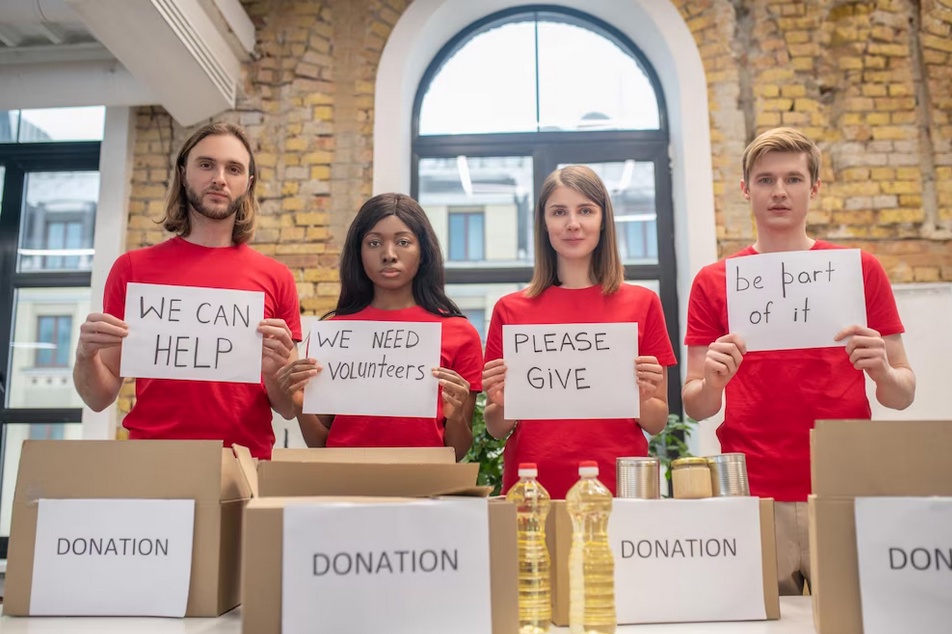Introduction:
The Clothes Bank: Empowering Communities through Clothing Donations
In communities around the world, a simple but powerful concept is empowering individuals and making a tangible difference in people's lives – the clothes bank. A clothes bank serves as a hub for clothing donations, providing a reliable and accessible platform for individuals to contribute and support those in need. Through this article, we will explore the significance of clothes bank, the benefits they bring to communities, and how they empower individuals through clothing donations.
I. The Importance of Clothes Banks
Clothes banks play a crucial role in addressing several pressing social issues within communities. Firstly, they serve as a vital resource for individuals and families who are experiencing financial hardship. By providing free or low-cost clothing options, clothes banks ensure that basic needs, such as clothing, are met for those who may not have the means to purchase new items. This not only fosters a sense of dignity but also helps individuals maintain their self-esteem and confidence.
Secondly, clothes banks contribute to sustainable practices by promoting clothing reuse and reducing textile waste. The fashion industry is known for its high levels of production and rapid turnover of trends, resulting in vast amounts of clothing ending up in landfills. Clothes banks provide an avenue for individuals to donate gently used items that would otherwise be discarded. By extending the lifespan of clothing through reuse, clothes banks actively participate in the circular economy and help minimize the environmental impact of textile waste.
II. The Benefits of Clothes Banks
a. Empowering Communities
One of the primary benefits of clothes banks is their ability to empower communities. These initiatives create a sense of togetherness and support, as community members come together to donate and volunteer. Clothes banks often operate with the help of dedicated volunteers who sort and distribute the donated items. This collaborative effort fosters a sense of community engagement and provides an opportunity for individuals to actively contribute to the well-being of their neighbors.
b. Meeting Basic Needs
Clothes banks address the essential need for clothing, which is often taken for granted. By offering a wide range of clothing options, including attire suitable for work, school, or specific occasions, clothes banks help individuals access appropriate clothing for different aspects of their lives. This, in turn, enables them to participate fully in society, attend job interviews, pursue education, and maintain a sense of normalcy.
c. Promoting Sustainability
Clothes banks contribute significantly to sustainable practices by promoting clothing reuse. By accepting and redistributing gently used clothing, these initiatives help reduce the demand for new clothing production, which is resource-intensive and contributes to environmental degradation. By extending the lifespan of garments, clothes banks actively participate in the reduction of textile waste and promote a more sustainable approach to fashion consumption.
III. The Impact of Clothes Banks on Individuals
a. Economic Relief
For individuals facing financial challenges, clothes banks provide economic relief by offering free or affordable clothing options. This enables them to allocate their limited resources to other essential needs, such as food, housing, and healthcare. By reducing the financial burden of clothing expenses, clothes banks help alleviate some of the hardships faced by individuals and families.
b. Boosting Confidence and Self-Esteem
Access to appropriate clothing can have a profound impact on an individual's confidence and self-esteem. Clothes banks ensure that individuals have access to clothing that makes them feel comfortable, presentable, and confident in their daily lives. This is particularly important in situations such as job interviews or social gatherings, where appropriate attire can make a significant difference in how individuals are perceived and how they feel about themselves.
c. Fostering a Sense of Community and Support
Clothes banks create a supportive community environment by connecting individuals and families who may be facing similar challenges. This sense of camaraderie helps individuals feel supported, understood, and less isolated. Additionally, the act of donating and volunteering at clothes banks allows community members to actively engage in supporting one another, promoting empathy, and strengthening social bonds.
IV. How to Support Clothes Banks
Supporting clothes banks can be done in various ways. Firstly, individuals can donate gently used clothing items that are clean and in good condition. Clothes banks often have specific guidelines regarding the types of items they accept, so it's essential to familiarize oneself with these guidelines before donating. Secondly, financial contributions can be made to help cover operational costs, such as storage, transportation, and facility maintenance. Lastly, volunteering time and skills at clothes banks can make a significant impact by assisting with sorting, organizing, and distributing donated items.
Conclusion
The clothes bank model represents a powerful approach to empower communities through clothing donations. By providing free or low-cost clothing options, clothes banks meet the basic needs of individuals and families, while also promoting sustainability and reducing textile waste. The benefits of clothes banks extend beyond the material support they provide, as they foster a sense of community, boost confidence, and empower individuals to actively participate in society. By supporting clothes banks through donations and volunteering, we can contribute to a more inclusive and compassionate community where everyone has access to the clothing they need.


No comments yet